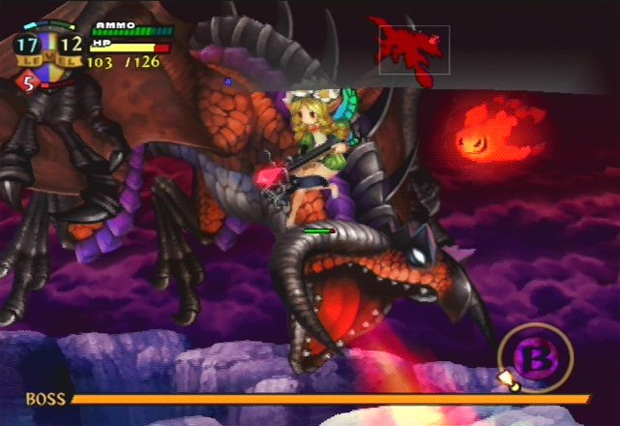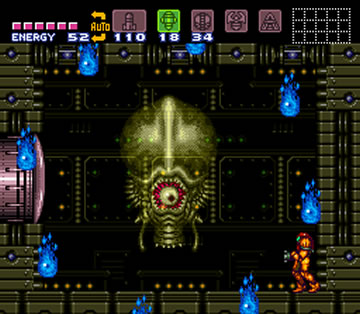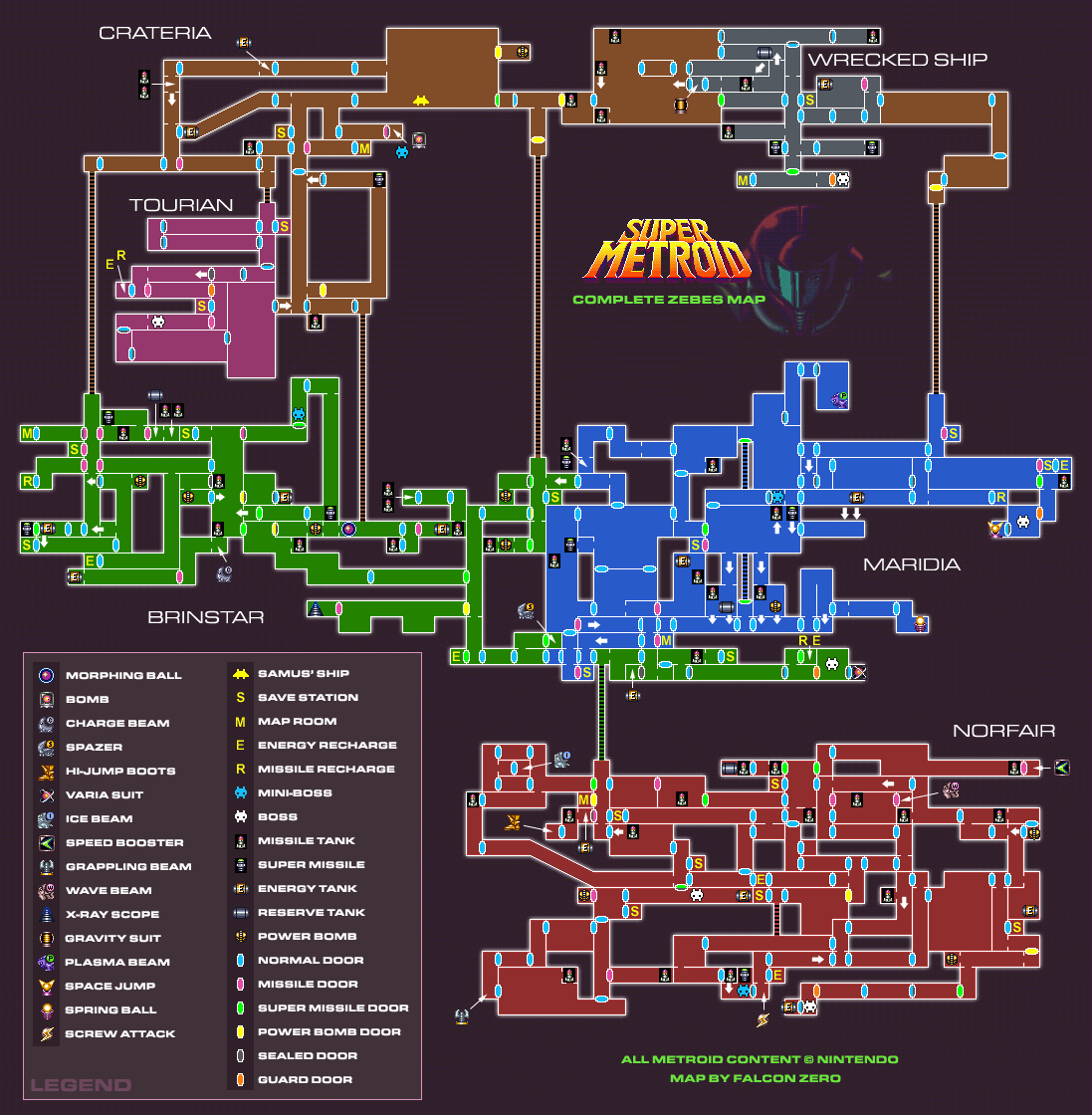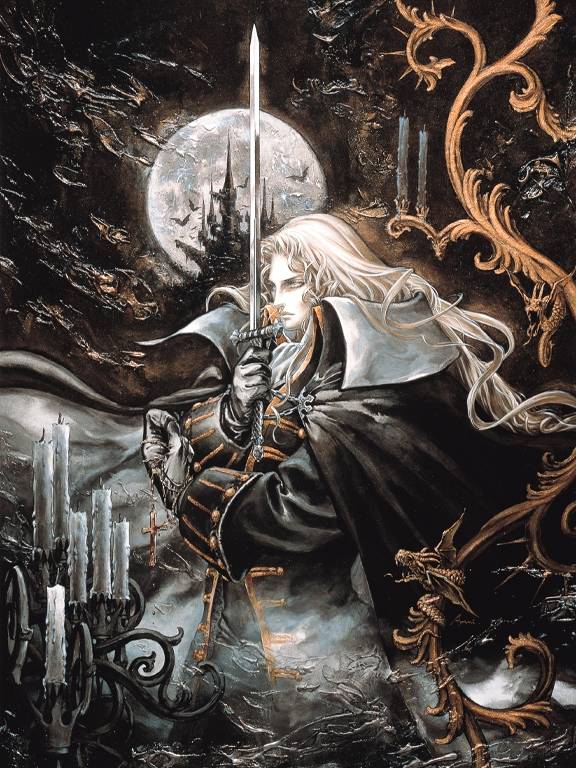Last updated on June 19, 2013
[list type=”arrow, square, plus, cross or check”]
- Part 1: “RPG Elements”, Metroid, and Personal History
- Part 2: A Retrospective on Pre-Symphony of the Night Castlevania
- Part 3: Why Is Symphony of the Night So Good?
- Part 4: Real-Life Vampirism and Alucard
[/list]
Oh boy, am I going to catch some flack for this one – I like Castlevania: Symphony of the Night more than Super Metroid. Commence the virtual fruit throwing in 3, 2, 1…
So a bit of background: when I played video games in the early 1990s, my preference primarily came from action games. I like Mario, I like Sonic, that sort of thing. However, my brother continually played whatever JRPG he could get his hands on, and he ended up forcing me to like them too. My personal favorite (as I may have said on a podcast or two) is Final Fantasy IV/VI, even if I think VII’s the perfect Final Fantasy game. Returning to the early 1990s, we had no shortage of either game in great quantity and quality, from Earthbound and Chrono Trigger to Super Metroid and Super Mario World 2. Hey, it’s not like I picked a special time to be born – it just happened that way.
As such, my tastes tended towards the Japanese, the action-based, and the statistics based. In all honesty, I do not like math and still don’t (cue the cries that Zachery Oliver’s ignorant), but video games make sense to me. Their statistics lend themselves to a particular, if arbitrary, goal; at the very least, big numbers going up provides the player with a sense of accomplishment, whether through successful reflex-oriented challenge or exhaustive preparation for a tricky boss fight. Since I attended school at the same time, the same work ethic applied to both areas – I’d get As through preparation and execution of my plans and memorization (especially when it counted – high school for college scholarships). My parents would reinforce this through video game rewards: get an A on a report card, and get a video game for your trouble. At the same time that I got the game I wanted for that particular quarter, I also received a game to continue learning those same skills.
As you might expect, this placed certain expectations and tastes into my entertainment far before I had the consciousness or self-awareness to understand my own tastes. I just tend to like my entertainment straightforward, rationally based (in contrast to, say, emotional resonance), and altogether fun. The Bible and Christianity equaled serious business – everything else seemed ephemeral by comparison, so video game filled an outlet there. That fun they provide might come from overcoming a particularly challenging obstacle, but there’s so much variety in said obstacles that I hesitate to call strategy in advance or on they fly better or worse; they’re two sides of the same coin. I guess that means I wouldn’t be opposed to a mix of the two – as long as said mix effectively worked.
I imagine that’s the impetus for that recent glut of “RPG Elements” you may see in just about EVERY GAME RELEASED IN THE PAST DECADE. Well, not every one, but seeing that one tagline emblazoned on every box tends to make one a little bit annoyed after a while. Either the “elements” exist merely as a marketing ploy (let’s be honest about Borderlands, shall we), or they hamper the actual action elements so much that they intentionally gimp your ability to win by sheer skill (Bethesda’s recent Fallout games being a notable example of this practice). It’s a delicate balance, and not many companies or development houses understand this simple concept.
To cite a recent example (related to our main subject which got lost somewhere five hundred words ago): Odin Sphere attempts to make an action game with RPG elements. Still, you cannot win on pure skill alone. The delay between your attacks, coupled with the inability to dodge or avoid attacks through some invincible maneuver, in addition to enemies not being stunned when you attack them means your pure reflex-oriented skills don’t work. Rather, VanillaWare wants to force an impression on the player: use items, use all these RPG-like tools at your disposal to win. You will take hits, so throw some plants out there and grow some health. Buy some more inventory space so you have reserve rations; also, use said bag space for extremely powerful magic spells.

Unfortunately, Odin Sphere made no sense to most players, including myself. Expectations count for a lot in video games, and the aesthetic style certainly looked like a throwback to side-scrollers like Final Fight. Who expected such an odd hybrid? VanillaWare later made Muramasa: The Demon Blade, which cleaved the game in half to support both action and RPG-focused players, but it comes at the expense of making the game’s Metroidvania styling interesting. Ah, and we come to that much maligned word: Metroidvania. Castlevania: Symphony of the Night started the trend of combining Super Metroid’s near impeccable action-exploration elements with a JRPG, and found great success. In fact, it’s the only “good” one of the lot, and I say that rather affectionately to its successors.
Let’s start with Super Metroid first, just for completion’s sake.
Super Metroid didn’t come into my hands until far later, say, 1998, as my uncle (always ready for the next big thing) dumped his SNES collection on us and proceeded to buy a Playstation. I played Super Metroid at or around the same time I played Symphony of the Night, so I had my view of both as contemporaries. Super Metroid combined an eerie atmosphere, impeccable controls, and a wonderful sense of progress and learning new skills into a illusionary open world. Let’s be honest – the progression in Super Metroid’s rather straightforward until you strive for speed runs, and that’s people breaking a game for challenge or because they became bored. Still, the connections between all the levels and areas on Zebes created a sense of continuity between the different worlds. Here was an alien world, unlike our own, filled with dangerous creatures and bizarre sights.
The Wrecked Ship section always frightened me, personally. The music and setting’s excessively creepy, and doesn’t even fit into the science fiction vibe that Metroid series games attempt. Here was a weird ghost story, told entirely through mechanics, sights, and sounds without any kind of explanation as to why that ship was there, what became of the crew, and why a flying cyclopian poltergeist wanted to kill you. Much as I like Prime, Super Metroid did the story-telling idea right by providing enough context, but not too much. The player gets to draw his own unspoken, unheard conclusions. It’s very neat, and I just spoiled it, unfortunately, but you get the idea.

As far as the weapon choice and the clear sense of progression, it’s obvious that there’s numbers girding that increase in strength to a fixed number. Samus doesn’t receive “level ups”, but she can find hidden weapon and health canisters with the benefits of her new abilities. Functionally, it’s the same, but practically it provided an incentive for players to search and explore every nook and cranny for new items. If you couldn’t defeat a boss, perhaps a new health upgrade could put you over the edge. Maybe you didn’t know where you were going; I’ve only played it too many times and seen the rather obvious path to completion, but it’s entirely possible to lose your direction in the throes and joys of exploration. I can’t count how many times a tangential path would set off a mental note: “can’t get over there, will do later” – lo and behold, searching’s always worth your while. Other games made easter eggs for fun; Super Metroid made them a tangible, and exciting part of the game.

As far as Samus’ control goes, she works perfectly for this kind of game. This wasn’t necessarily a game about intense shooting actions – more like lots and lots of platforming with puzzle solving and pattern recognition. You might fight enemies a whole lot, but they’re more stepping stones in between the moments that you find yourself lost. Sometimes they become part of the puzzle, as indestructible enemies and the Freeze Beam proved pretty regularly. Samus’ jump always felt pretty floaty, but that was the appeal – the game didn’t kill you for lacking precision because it wasn’t looking for it. It wanted you to fall into new areas, find yourself isolated and alone in a giant, hostile planet.
I suppose that doesn’t sound fun when reading the description, but Super Metroid proved a moody exploration experience proved both exciting and quite game-like. You didn’t need to sacrifice the game mechanics for the story; the story existed before your eyes in the look of a strange creature, or a dilapidated room containing ancient technology. It set a precedent in more ways than one, and many games, unfortunately, borrowed all the wrong ideas from it.
They thought we liked getting stuff; no, said the gamers, we like getting interesting stuff. We like investing in the, to use a completely academic and pretentious sounding phrase, “ludic language” of the mechanics to express ourselves. Since Super Metroid provided plenty of that while using aesthetics to enhance the mechanical experience, that’s what people remember. I suppose that’s why I don’t think speed runs add much to the game, even if intended; I’d like to take my time in the virtual theme park, thank you very much. To go too far forward, other games in the same vein failed to get it once the word came out on Super Metroid’s awesomeness.
In addition to that, Super Metroid’s critical legacy outlasted its commercial success – it wasn’t the feel-good hit of 1994 (that went to Donkey Kong Country, a fantastic game in its own right). It sold incredibly poorly in Japan, to you and I’s surprise, which makes sense given that the Sega Saturn and Playstation emerged at the same time. North America and Europe took far more kindly to Super Metroid, but it didn’t post numbers the way Nintendo’s other franchises did. It’s no wonder they retired Metroid for eight years after (the death of Gunpei Yokoi didn’t help matters). Symphony of the Night would, quite literally, resurrect the whole style of Metroid.
Returning to our story, I played Super Metroid because I didn’t own any non-Nintendo systems (yeah, I had a Genesis for a time, but I barely played it). At that time, we were all in Nintendo 64 fever, but Nintendo’s latest missed something important: JRPGs. There were, literally, none. Quest 64 doesn’t count, and if you think it does you are dead to me, now and forever. As such, the first two years after the Nintendo 64 released left me without my primary genres of choice. Sure, I had plenty of Nintendo games to play, and some of Rareware’s best work came out around that time frame, but I missed my JRPGs and fighting games (forgot to mention those). My brother also saw that Final Fantasy made the jump to the Playstation, that most maligned of competitors; what choice did we have in Christmas 1998 then to buy one?
The Playstation brought many of my family’s favorite franchises back to the household, including Mega Man. I remember holding a used copy of Mega Man X4 for 34.99 and picking it up as if it were no big deal. Can you imagine paying that much now? Of course, one other game stuck out to me in my trips to Electronics Boutique and Babbages – Symphony of the Night. Heck, I’ve still got it in my house ready and waiting for yet another playthrough.
Like Super Metroid, I find myself playing the game over and over again. We could call it apples and oranges, but I just prefers Symphony of the Night’s brand of exploration to that of Super Metroid. Something about its whole appearance and mechanical depth just fills me with the sort of glee that those JRPGs and action games of old did. Of course, it didn’t play like any Castlevania games that came before it. Let’s get into that…

